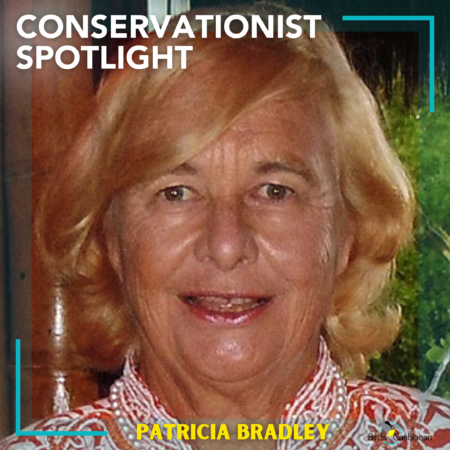 Patricia Bradley arrived on Grand Cayman in 1982 and began to put together comparative monthly records of bird sightings on all three islands. In the four decades since, she has authored several field guides and natural history books, and a British Ornithologists’ Union checklist. She is a founding and Life member of the Cayman Islands National Trust, chairing and serving on its Environmental Advisory Committee, and she has served many years on the Cayman Government’s National Conservation Council. She was instrumental in establishing the Cayman Islands’ Important Bird Areas, and developing the nature tourism project in the Sister Islands, including design of interpretative signage at lookouts on Cayman Brac and Little Cayman. Patricia’s contributions to conservation extend well beyond the Caymans. She has long been a member and supporter of BirdsCaribbean, including as a past co-chair of the Seabird Working Group (SWG), and co-edited the book ‘An Inventory of the Breeding Seabirds of the Caribbean’ in 2009.
Patricia Bradley arrived on Grand Cayman in 1982 and began to put together comparative monthly records of bird sightings on all three islands. In the four decades since, she has authored several field guides and natural history books, and a British Ornithologists’ Union checklist. She is a founding and Life member of the Cayman Islands National Trust, chairing and serving on its Environmental Advisory Committee, and she has served many years on the Cayman Government’s National Conservation Council. She was instrumental in establishing the Cayman Islands’ Important Bird Areas, and developing the nature tourism project in the Sister Islands, including design of interpretative signage at lookouts on Cayman Brac and Little Cayman. Patricia’s contributions to conservation extend well beyond the Caymans. She has long been a member and supporter of BirdsCaribbean, including as a past co-chair of the Seabird Working Group (SWG), and co-edited the book ‘An Inventory of the Breeding Seabirds of the Caribbean’ in 2009.
Jennifer Wheeler: Hello Patricia! I understand this is your fortieth year in the Caribbean. When you arrived in the early 1980s, did you imagine you would become one of the most respected names in Caribbean ornithology?
Patricia Bradley: Well, I’m not sure I believe THAT. But, I do feel that I have had the opportunity to contribute and add to the efforts of bird conservation and habitats, when bird data was sparse in the 1980s. But so much remains to be done in the region to stem the loss of species, especially seabirds, whose breeding and foraging areas continue to decline. Cayman is now doing a great job.
JW: What brought you to the Caribbean? And did you come with a love of nature?
PB: I was born and lived in Ireland up until the age of 24. My parents brought me up outdoors and my mother was a very keen birder. At University, I studied Biology. After graduation, I stayed on to teach and participate in field projects. I began a PhD, but my husband was offered a job in Africa, so off we went to begin our international life together, and we never went back to Ireland.
JW: Where did you go?
PB: Our first station was in Malawi, where I worked on game counts and spent a year with the Locust Research Council tracking swarm development in the wetlands; then Botswana and more birds. In 1972, my husband went to work with the UN. First to Antigua, then the British Virgin Islands, and then the Turks and Caicos Islands where I set up the National Trust, and helped establish the large Ramsar Site that encompasses the Caicos wetlands. In each location, I gathered and submitted birding records to the British Ornithological Union as there was a dearth of information. People in Europe didn’t understand what a birding hotspot the Caribbean was!
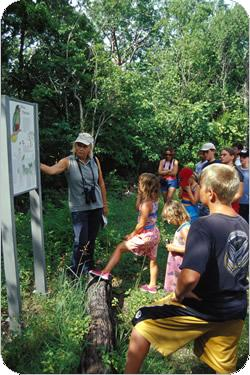
In 1982, we reached the Cayman islands, and I began to compile a checklist of birds of the 3 islands. Cayman birds were little known both here and overseas. Over a 20 year period, aiming to put a monetary value on Cayman’s undervalued and underrated natural areas, I wrote field guides, set up forest and wetland signed trails on Little Cayman and Cayman Brac (linked to maps and a website – a first for the region), and invited bird tour leaders to put us on their route. Also raising awareness locally through the National Trust we had set up.
JW: So birding records led to field guides that led to a career in developing bird conservation projects in Cayman Islands and elsewhere in the Caribbean! In 2003, you and Robert Norton commenced An Inventory of the Breeding Seabirds of the Caribbean (Bradley and Norton 2009). Do you have a special interest in seabirds?
PB: Yes, seabirds are very important in my life. I find them especially beautiful, with their combination of freedom in the air and vulnerability on the ground. Rob and I were focused on sea level rise and the effects of tropical storms, which combined with habitat loss are major threats to seabirds. Also, my mentor, John Croxall (a foremost expert in seabird conservation globally), was working in the Antarctic on fisheries and albatross and he shared with me what the international community was doing for seabird protection.
Thinking about the plight of seabirds, especially given regional climate change threats, we realized that assessing seabird numbers across the Caribbean was essential. We needed a comprehensive snapshot of the state of things – recent population numbers, threats, and declines – so we could begin to understand the changes that were occurring. The Inventory of Breeding Caribbean Seabirds was finally finished in 2009, building on the works of both van Halewyn and Norton 1984; and Schreiber and Lee 2000.
JW: Talking about the 2009 book must be bittersweet due to the recent passing of Rob Norton.
PB: Absolutely. I lament the loss of this wonderful, dedicated, and courageous man. We go back to the early 1980s when I began sending him birding records from the Cayman Islands. Our friendship cemented when we met in Jamaica in 1985 and on Turks and Caicos in 1987, and continued until his death.
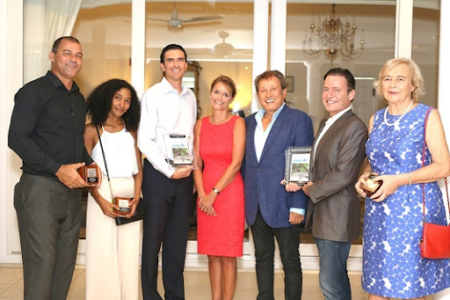
JW: Finding and persuading seabird specialists from each island to contribute must have been a challenge.
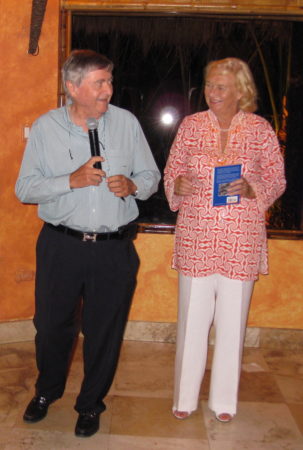
PB: The editing process was a huge challenge, with an embryonic internet! But it was also great fun as we worked with English, Dutch, French, and Spanish ornithologists, and got to know many of the corners where seabirds hang out! Thank goodness for Rob’s exhaustive understanding of the regions’ birds, and GIS data and maps brilliantly provided by William Mackin. The meetings of the Society for the Conservation and Study of Caribbean Birds (now BirdsCaribbean) provided an essential structure and backbone for the work.
JW: Chapter 30 of the Inventory presents Conservation Issues and Proposals. Some of these have progressed nicely, some not at all. How are you feeling about the state of things?
PB: Yes, well, conservation activities often wax and wane, depending on opportunities, funding, and crises like hurricanes, social unrest, and of course, COVID-19. Unfortunately, the effects of climate change – rising seas, changes in ocean chemistry, and prey base – are an increasing threat to Caribbean seabirds. Reports estimate that many populations have decreased in the last 20 years. In the Cayman Islands, we have lost 50% of what was one of largest colonies of Red-footed Boobies in the region. Preliminary results indicate that food shortages contributed to decreased breeding success, plus cat predation.
That’s why the Seabird Working Group’s promotion of a region-wide census is so critical. Previously lack of continuity has been a major issue, with data collection dependent on one individual who either moved country or lost funding. I hope the 2023 census will change that, to go beyond the census to establish a regional monitoring database updated regularly, to allow a rapid response to threats to be addressed.
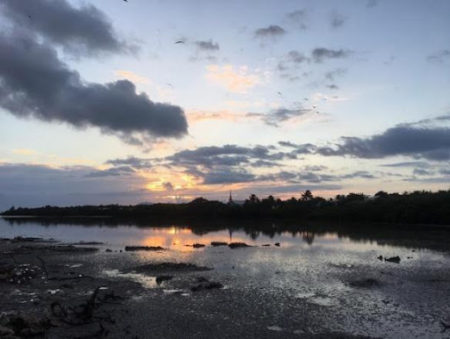
JW: Any signs of hope for seabirds?
PB: Of course! There is always hope. And there are waves of progress… More people got started in seabird conservation following the BirdsCaribbean seabird project from 2011 to 2013. I’m thinking about people like Hannah Madden and Juan-Carlos Fernandez-Ordonez. And Dr. Patrick Jodice’s engagement, which led to more seabird tracking research on frigatebirds, boobies, and petrels. The Bermuda Petrel story is extremely heartening. And support by the Darwin Initiative has helped several of the United Kingdom Overseas Territories (UKOTs), including the Cayman Islands, to advance its seabird monitoring.
One exciting thing happening now is the use of National Capital Accountancy by the Cayman Islands Government, and 2 other OTs, to produce an economic valuation of ecological services provided by the national resources. We recommended this approach in the Inventory – calculating the concrete values of interconnected resources: marine, wetlands, forests, relating the ecological value of seabirds to fishing, coral reef health, nature tourism, etc. The Government intends to adopt this approach, presently in its infancy with only the mangrove asset value determined. It will have profound influence in recognizing and conserving natural resources as part of the financial balance sheet of the country, and incorporation into the legislation in Cayman, as well as providing a model for the region.
JW: What’s your advice for the BirdsCaribbean Seabird Working Group for the regional Caribbean Seabird Census push?
PB: Keep pushing! It’s not easy coordinating the efforts across a region as diverse as the Caribbean. I know this and it often takes lots of persuasion! Take advantage of the people that have become trained and confident in seabird monitoring to encourage and coach others to assist in surveys. This should help to forge a new generation who will continue the work. And figure out a way to fill some of the gaping holes – it’s shocking how little attention the seabirds on the offshore cays in Cuba and The Bahamas are receiving. We know costs are prohibitive with thousands of cays to census, but somehow we have to get creative to fund people to get out there! Additionally, the crisis that Caribbean seabirds are facing must be elevated at National levels so that monitoring becomes a Government responsibility, as has occurred in Cayman since 2016, and in the US islands for generations. However, where Government support and funds are not forthcoming, international NGOs and BirdsCaribbean will need to continue their search for funding to ensure that this brilliant initiative does not stall. It is the only way management plans for each species and site can go forward.
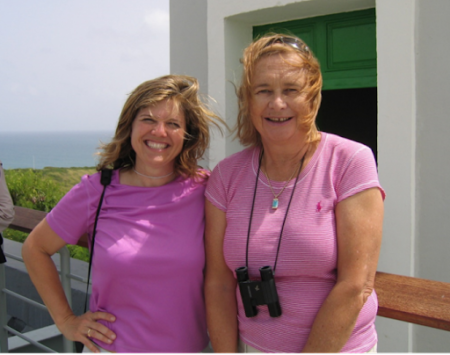
JW: Thank you so much for your time, it’s great to catch up. I can’t remember when you and I first met, but I definitely remember hanging out at the 2007 BirdsCaribbean conference in San Juan, Puerto Rico. Will I see you this summer at the upcoming conference in the same location?
PB: Alas, no, making that trip isn’t possible. But I will engage virtually! Keep me in the loop for remote attendance, especially the Seabird Working Group symposium and discussion!
Books by Patricia Bradley:
- Birds of the Cayman Islands. 1995. By Patricia Bradley and Yves-Jacques Rey-Millet. World Publications.
- The birds of the Cayman Islands. 2000. By Patricia Bradley. British Ornithologists’ Union.
- An Inventory of Breeding Seabirds of the Caribbean. 2009. Edited By: Patricia E. Bradley and Robert L. Norton. Florida University Press.
- A Photographic Guide to the Birds of the Cayman Islands. 2013. By Patricia E. Bradley and Yves-Jacques Rey-Millet. Bloomsbury Publishing.
- Birds of Cuba: A Photographic Guide. 2020. By Arturo Kirkconnell, Patricia E. Bradley, and Yves-Jacques Rey-Millet. Cornell University Press.
